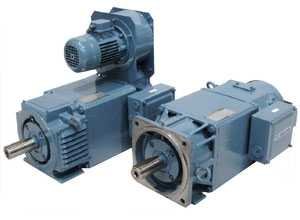
An armature within an electric motor serves to convert electrical energy to mechanical energy. It is typically made up of copper bar with an layers of insulation coupled with ends connected by coils coupled to commutator segments. The surplus motors are the most efficient Motors Voltage applied to the brushes of the motor causes them to come in contact with the commutator segments of its motor and is referred to as an AC voltage that increases as it nears and moves away from its pole.
Commutator
Commutators are metal bar that transform the alternating current in an armature in direct current that can be used for motors. They also guard against switching the polarity. They are located between stationary brushes and the armature core, the Commutator is made of copper wire insulated with mica (though other materials can also be employed).
The Armourye is a conductor covered with wire, which produces magnetic fields that are at parallel to the generator's fields, which result in shaft torque (rotating machine) or force (linear machine). This coil can serve two roles - carrying current through it and cutting magnetic flux generated by the field coils.
An armature coil can be found in two kinds: lap wound as well as wave wound. In a lap wound armature the coil's end connects directly to its pole via a commutator segment as their principal ends join directly to the brush segments at each end.
A volt/ohm tester can be utilized to measure the resistance of an armature's winding's resistance, as well as every pair of commutator bars separated by 180 degrees.
Windings
The armature winds of electric motors are made up of copper coils and connected to a co-mutator. Insulated between each conductor and in its core, these conductors help minimize eddy current as well as hysteresis loss. They can either be lap wound or be wound in waves based upon the number of current pathways and voltage levels you want.
The heart of an armature typically consists of multiple small metal plates, called laminations which have thicknesses ranging from 0.5mm and 1mm. They're then put together in the shape of an armature's core. When they are assembled, the laminations will be pressed on a shaft shape using pressure from pressing machines as well as slot stamping machines and slot stamping machines, where coils will eventually rest; also, the core includes a coarse knurl which helps the commutator engage it correctly.
As current passes through the armature, electrons in its coils become freed up producing a magnetic force which is opposed to the flow of electricity which creates an opposing magnetic force that turns the rotor and generates electric motors for sale .
In order to ensure the proper functioning of magnets in a safe manner, the armature should be properly configured. It should be oriented normal to the field for linear force or shaft torque production (rotary machine) or brush current through end brushes that are stationary and onto commutator bars that have equal resistance readings on an ohmmeter that indicates the correct functioning of the armature.
Slots
Slots inside a motor can be openings that are designed to boost its effectiveness by connecting copper conductors' coils to the commutator, and reducing the losses in copper resistance, while controlling the electromagnetic force which causes cogging. These are armored coils that are placed in these slots. They are joined by two wires that are insulated to the commutator. When activated, their magnetic field produce Lorentz forces which propel the rotating part forward.
Commutators, made of iron rods, are used to transfer energy generated by motors into their respective loads. In order to minimize harmonic distortions and the vibrations that they cause, their length and speed must be able to satisfy the requirements of torque of each machine for effective working.
The ideal design for armatures must also reduce iron losses, which are due to eddy courants. miniature magnetic fields formed when two magnetic fields collide and spin - forming in steel due to rotational magnetic fields. Eddy currents can be reduced by having copper conductors that are part of the armature's structure are placed so that there aren't any flux cuts between copper conductors within the armature. Buy an electric motor at surplusrecord industrial electrical motors. These are the best price for an electric motor utilized electric motors available at surplusrecord.
An ideal armature will have the correct number of slots that can create an ideal magnetic field, measured by dividing of poles and its operational frequency. An ideal armature should produce an electric field in which its geo-neutral axis (GNA) is in line with angular dispersion from a barre commutator.
Core
The core is a rigid rod that carries the armour. It's got slotted edges to permit rotation when activated with electrical energy, as well as insulation for protection from arcing between the brushes. Also, mechanical power is transferred to it through the rotor shaft conduit.
A field of electromagnetic energy is generated when a conductor loops around iron stack teeth and joins a commutator bar. This creates a current that draws permanent magnets into the stator. The opposite magnetic fields create what's known as Lorentz force. The forces could then create torque within an electric motor.
This magnetic field could be modified by adding eddy current loss and altering other factors such as winding polarity. The coils on an armature may be wound in different ways based on the type of motor it is designed for and demands for power output. Furthermore that the bigger conductors result in higher copper losses due to frictional losses.
The commutator and core are usually separated by the use of an insulating material, like the thermoset or sheet mica, for the purpose of preventing copper wires within the armature to touch one or the other in its rotating route. Armetures can be then twisted by coils of wire. Certain models have slots which are twisted to decrease cogging. They also provide a level the movement of one pole to the next.


